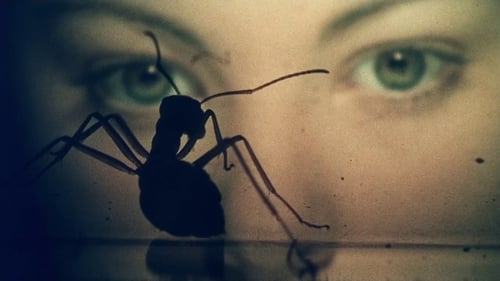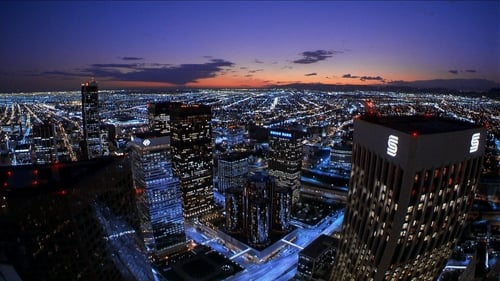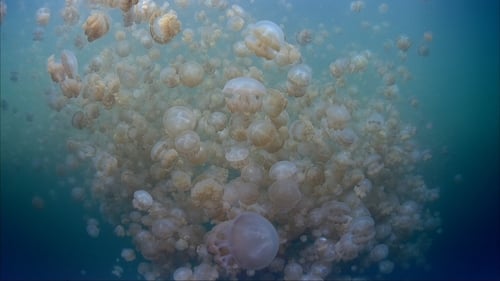Demolishing and Building Up the Star Theatre (1901)
ジャンル : ドキュメンタリー
上映時間 : 3分
演出 : Frederick S. Armitage
シノプシス
Time-lapse photography showing the one month-long demolition of the Star Theatre in New York.

Coral reefs are the nursery for all life in the oceans, a remarkable ecosystem that sustains us. Yet with carbon emissions warming the seas, a phenomenon called “coral bleaching”—a sign of mass coral death—has been accelerating around the world, and the public has no idea of the scale or implication of the catastrophe silently raging underwater.

Laurel Canyon focuses on Sam and Alex, a pair of upper-middle class lovebirds from the East Coast who relocate to Los Angeles. Enter Jane, Sam's estranged mother, a successful record producer, who's more than willing to put the couple up in her lavish digs. As Sam and Alex settle in at Jane's, they gradually lose their straight-and-narrow approach to life and begin to experiment.

宇宙で発生した不可解な現象を契機に、砂漠に奇妙な構造物や模様が現れる。興味を持った生物学者たちが調査すると、飛躍的に知性の発達した蟻によって造られたものである事が判明。更に、蟻たちは人間と交信することを望んでいた。彼らは数々の実験に対する怒りを示してきたのだ……。

See the earliest creatures of the Triassic Period to the monsters of the Cretaceous in a ‘life-sized’ IMAX ® presentation. Join renowned paleontologists as they discover new fossils and uncover evidence that dinosaur descendants are still among us. Realistic and scientifically-accurate computer generated animation brings dinosaurs back to life…in a big way!

Carefully picked scenes of nature and civilization are viewed at high speed using time-lapse cinematography in an effort to demonstrate the history of various regions.

The Living Sea celebrates the beauty and power of the ocean as it explores our relationship with this complex and fragile environment. Using beautiful images of unspoiled healthy waters, The Living Sea offers hope for recovery engendered by productive scientific efforts. Oceanographers studying humpback whales, jellyfish, and deep-sea life show us that the more we understand the ocean and its inhabitants, the more we will know how to protect them. The film also highlights the Central Pacific islands of Palau, one of the most spectacular underwater habitats in the world, to show the beauty and potential of a healthy ocean.

Time-lapse photography showing the one month-long demolition of the Star Theatre in New York.

A feature-length documentary showing the changing world of nature, the sky, the sea, the sun, planets, insects and volcanic action. A story of nature's strange and intricate designs for survival and her many methods of perpetuating life.

"Percy Smith (1880-1944) was world famous as a photographer of plant life. Probably the first British example of time-lapse photography as applied to the growth of plants." Monthly Film Bulletin, November 1955.

This documentary follows 200 days in the life of contemporary artist Hiroshi Sugimoto— a leading presence in the world of modern art. He is the winner of many prestigious awards and his photographs are sold for millions of yen at overseas auctions. The film shows the sites of the Architecture series shot in southern France, the huge installation art work at 17th Biennale of Sydney, his new work Mathematics at Provence, his art studio while working on Lightning Fields, and more. It thoroughly pursues the question Sugimoto's works pose - "living in modern times, what are these works trying to tell us?" A thrilling look into the world of Hiroshi Sugimoto.

Time lapse documentary about the lifecycle of flowers.

High speed film and time-lapse photography combined to create breathtaking images of the night sky and Halley's Comet in this astronomical short subject. Currently lost media.

'Uit het rijk der kristallen' is one of several scientific films made by J.C. Mol. In the film, the crystallization processes of various chemicals are shown. There are different versions of Uit het rijk der kristallen: the original silent film was given a soundtrack in the 1930s, and there is a colour version of the film which was made using Dufay colour. A clip from the film, or other shots of identical crystallization processes, can be seen in Mol’s other films. The film was not only screened at educational and scientific presentations, but also resonated within avant-garde circles. The film was screened at the first show presented by the Harlem branch of the Filmliga. This was followed by a screening at Amsterdam’s Filmliga, and at ‘Studio 28’ in Paris. There, the film was screened as a ‘triptyque’, with three projectors side by side.


If it weren't for a series of cataclysmic events, a comet impact being first on the list, our planet could well still be the domain of dinosaurs. Following Pr Rodolfo Coria, a world-reknown Argentinian paleontologist, we visit sites of major discoveries he has contributed to in Patagonia and travel back in time to see these amazing beasts come to life in 3D...

"Adrift" is shot on the arctic island of Spitzbergen and in Norway. It combines time-lapse photography with stop-motion animation of the landscape. Through camera-angles and framing the film gradually dislocates the viewer from a stable base where one loses the sense of scale and grounding.

A poetic reflection on the passing of time and youth.

140 seconds of 780 stills taken from a window in a dormitory.

An exciting video journey through the world of time-lapse photography by one of the founders of the science of photobiology, Dr. John Nash Ott. Do fluorescent lights cause cancer and childhood learning and behavior disorders? Can long-term exposure to low-level radiation as from TV sets, computers, fluorescent lights, and similar devices harm you? Does living behind window glass and with glasses covering our eyes over years affect our health? Is natural sunlight and trace ultra-violet radiation really harmful? Or is it necessary and beneficial? How do cells, plants, and animals respond to constant exposure to different light color frequencies? These and similar questions were the subjects of Dr. Ott's pioneering investigations in the field of photobiology, using the methods of time-lapse photography.

Dealing heavily with perceptions of time, Aeon documents the urban cityscape as Wellington transforms through a zen-influenced eternal cycle of birth, life, death and rebirth within a 24-hour period.










